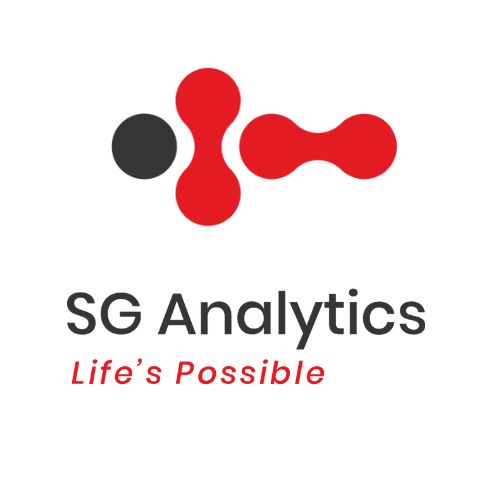Digital transformation is the most discussed approach in the financial services industry. In theory, it guarantees efficient processes, better customer experiences (CX), and comprehensive decision-making. However, the reality of the banking, financial services, and insurance industry tell another story. Most institutions arrive at a disheartening realization that their digital transformation initiatives have been unfeasible due to multiple flawed inputs.
Moreover, the entire process of deploying next-generation platforms, CRMs, and data lakes is frequently sabotaged by data quality issues, which underpin every subprocess’s dependability or precision. This post will unravel why migrating such dirty data is costlier and what stakeholders can do to make it better via entity resolution.
Read more: Why Financial Institutions Must Prioritize AI-Powered Entity Management in 2025
How Do Dirty, Low-Quality Datasets Hurt Enterprises and the Workplace Environment?
Many financial firms spend millions on digital projects, ranging from customer onboarding systems to real-time data analytics engines. These initiatives rely heavily on clean, accurate entity data. However, all too often, they use stale, inconsistent, or redundant database records to drive these new technologies.
The following outcomes due to that dirty data jeopardize leadership and teamwork.
– Delays that hinder decision-making,
– Cost overruns that unnecessarily increase budget liabilities,
– And furious, frustrated, overworked teams that have no morale left for seamless coordination.
Understanding the True Cost of Poor Data Quality and Inadequate Entity Resolution
The ramifications of poor entity data are enormous. As per industry studies, more than 40% of downstream mistakes are directly attributable to poor master data management (MDM). Stakeholders manually carrying out data entity record resolution will inevitably witness delays in new customer onboarding. The same time-consuming situation will arise in the case of regulatory reporting.
Meanwhile, duplicate or conflicting records across departments and business units’ data silos will be at the core of distinct challenges. After all, they will increase the overall operational risk. In turn, the financial institutions’ compliance issues will skyrocket.
Whether it is know your customer (KYC) compliance, anti-money laundering (AML) checks, or internal reporting, these tasks are only as effective as the entity data powering them. If an organization does not trust its data entities, every process that depends on them slows down or fails entirely.
Read more: Why Most Compliance Risks Start with Dirty Entity Data – and How to Fix It
Enter TruNtity: Clean Data from the Start
That is where TruNtity steps in. TruNtity is a next-generation entity management platform. SG Analytics has designed it to tackle the root causes of bad data quality issues prior to embarking on digital transformation initiatives. Instead of moving dirty data into your new and improved systems, TruNtity will only allow clean, validated, and enriched records during the data migration.
TruNtity will validate and resolve entities at their sources. As a result, all records will refer to true, verified entities from the start. It will automate data enrichment, bringing in authoritative third-party data to complete missing fields or improve data quality.
Stakeholders in finance and banking can leverage TruNtity to delete duplicate records both across business units and platforms. These scalable operations will preserve referential consistency. It is advantageous because the same entity will always appear the same way, wherever it occurs in either of your institutional systems.
Read more: Why Compliance Should Start at the Entity Level, Not at the End of the Workflow
Key Features for Data Managers
Built with today’s modern data teams’ top needs in mind, TruNtity brings impactful capabilities to empower global organizations to take back control of their entity data. Its AI-driven address parsing and validation capabilities also guarantee location information is always correct. TruNtity ensures proper formatting, no matter the country-specific sourced data variations.
Furthermore, multi-profile governance and user role controls enable granular access. Therefore, different users can benefit from and contribute to cross-departmental collaborative projects. In other words, TruNtity allows for better security, helping create a culture of accountability.
Likewise, real-time tracking of data quality metrics empowers data managers to identify concerns in advance and monitor progress toward their quality objectives.
Why TruNtity is Different
Most data management solutions try to clean up problems after they have already taken hold. Thankfully, TruNtity addresses data quality upstream, infusing intelligence and validation at the entry point. This proactive step ensures that your database systems are clean, consistent, and audit-ready.
In addition, TruNtity is designed for the demands of today’s interconnected, hybrid data environments. It provides compliance-ready data models that are seamlessly integrated into your current architecture through secure, scalable application programming interfaces (APIs). Whether you are planning ahead for migration or merely looking to handle extensive entity records, TruNtity provides clarity and control from day one.
Read more: Compliance Should Not Be a Fire Drill: It Should Be Built-In
Case Snapshot: $300K+ Saved Pre-Migration
In one instance, a multinational financial institution employed TruNtity to pre-validate over 400,000 entity records before undertaking a significant data migration. By finding and fixing problems prior to transitioning to the new platform, the organization saved more than $300,000 in rework expenses. That also indicates that many months of possible delay and compliance headaches were avoided.
Conclusion: Your Tech Stack Deserves Better
Digital transformation is just as powerful as the data it operates on. That is why updating the tech stack without fixing underlying data problems is akin to creating a high-speed train on broken tracks. Do not move the mess over. Instead, embrace TruNtity, which lets you begin with clean, verified, and consistent entity data. That way, all systems, processes, and customer touchpoints function as originally intended.
Let us transform your data before you transform your business. Request a demo.
About TruNtity: An Entity Management System by SG Analytics
TruNtity, SG Analytics’ AI-powered entity management software, provides a secure, API-first architecture that streamlines compliance assurance. From real-time corporate action tracking to enhancing document intelligence via generative AI integration, TruNtity equips banks, financial institutions, and compliance officers to ensure resilience. Whether you want audit-ready workflows for KYC/AML procedures or comprehensive legal entity identification powered by built-in referential integrity, SG Analytics’ TruNtity platform will meet all those requirements and more.

